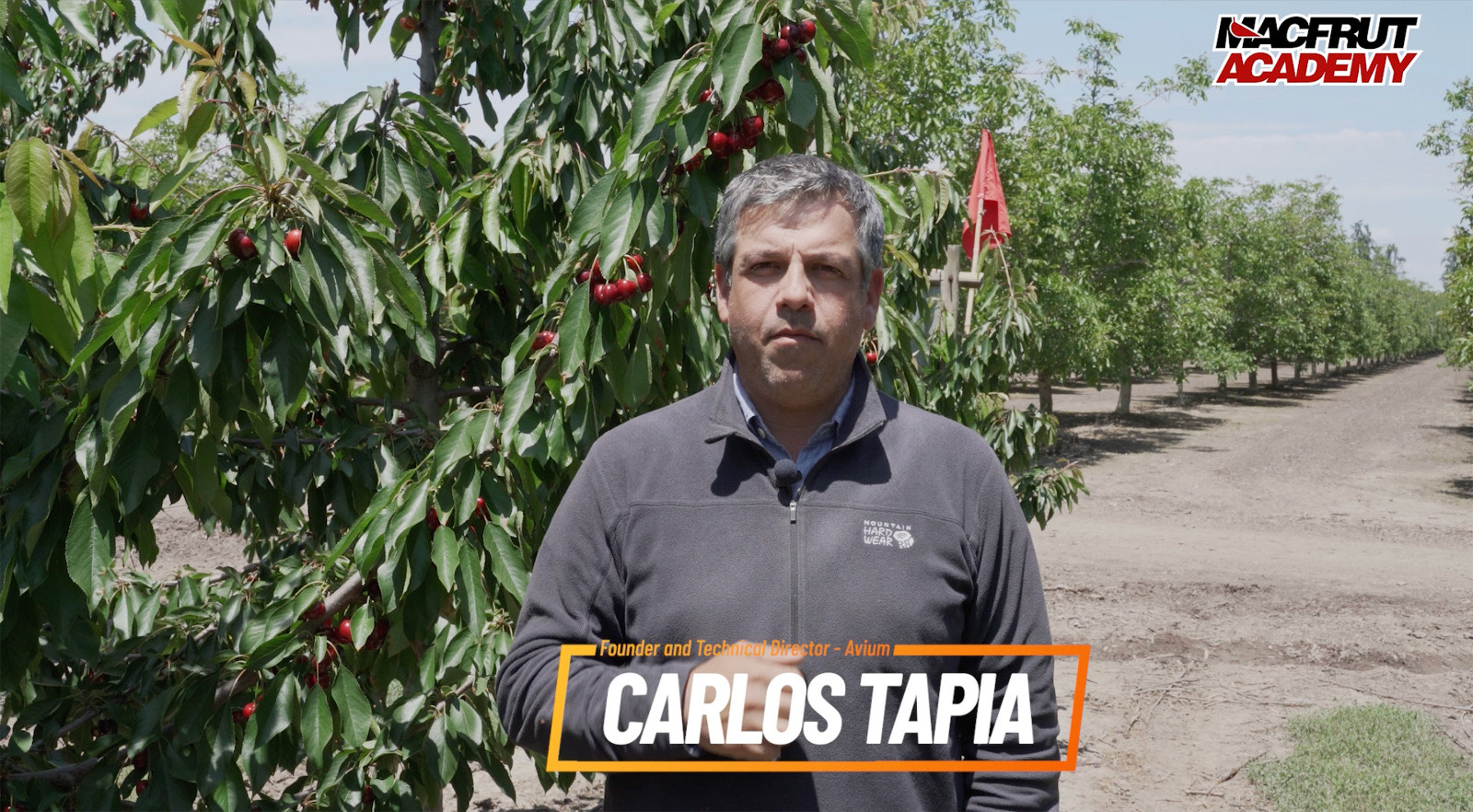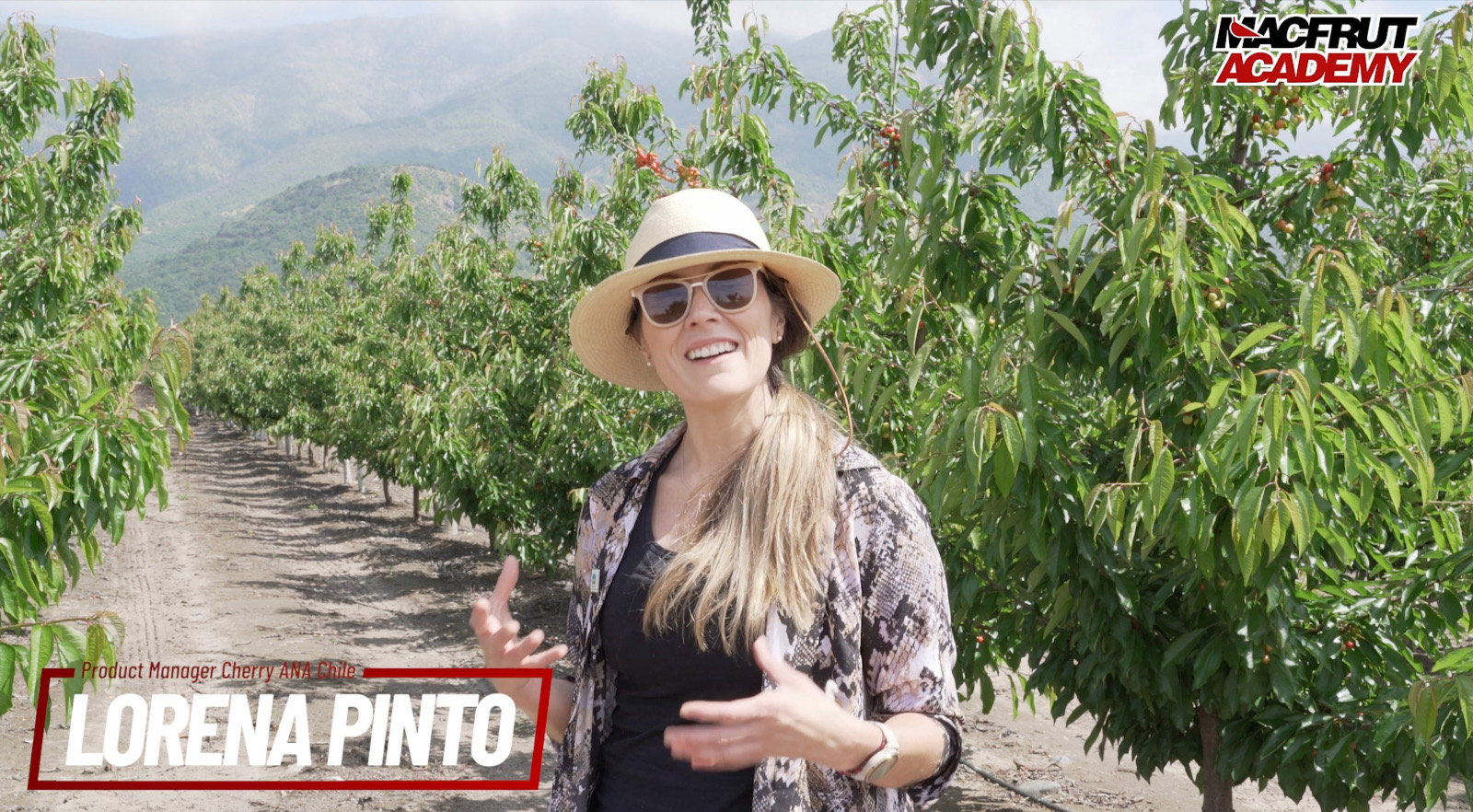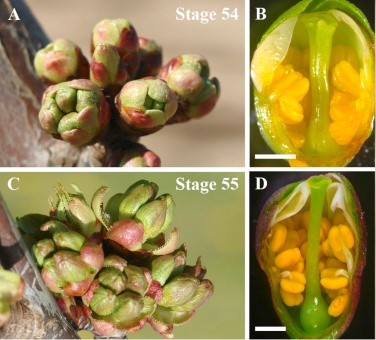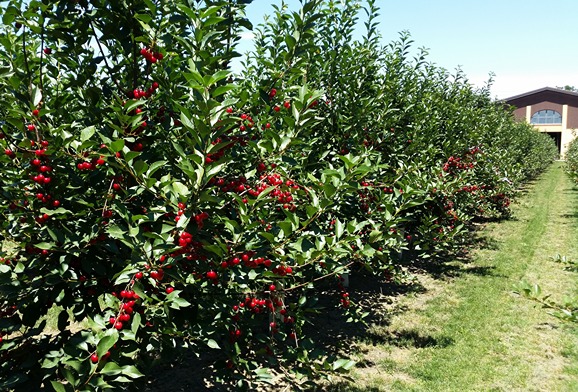The global cherry market has a leading player: Chile. The keys to success? Varietal innovation, farming systems, post-harvest technologies. This worldwide case history was narrated by the new video-lesson of the Macfrut Academy broadcasted last Thursday (March 14) with the possibility to watch it on demand on the platform.
The first of two episodes, the focus entitled "Chilean Cherries, a successful supply chain" put the spotlight on the field phase by interviewing experts and producers for an in-depth analysis of varietal choices, agronomic techniques, selection and commercial strategies.
As pointed out by journalist Maicol Mercuriali at the opening of the video lecture, the area of cherry production in Chile has increased from 3,200 hectares in 2000 to 62,000 hectares in 2022, rising to 65,000 in 2023. The strength of its model is exports, which carry almost 90% of production, rising from 103 thousand tonnes in 2014/15 to 415 thousand in 2022/23.
"The prospects are for further growth of cherry orchards of around 2000/2500 hectares per year,' explained Carlos Tapia, founder and technical director of Avium, a company specialising in research and development for cherry production. 'In the last season, which was rather difficult, exports were around 400 thousand tonnes.

Three are the strong points of the Chilean model: varietal choice, breeding systems, and post-harvest technologies. Just as there are three main types - Lapins, Santina and Regina - which account for almost 80% of production. Over the past four years, more than 50 per cent of the planted groves have been of the Santina variety.
"Yields have risen from 7 tonnes per hectare to 9.5 tonnes thanks to technological innovations," Tapia pointed out. Major innovations were recorded on two fronts, rootstocks and planting systems: Colt is the most popular, followed by Gisela12 and MaxMa14. "These innovations have increased the density per hectare to 1200 trees today, when six years ago it was 900 per hectare.
Chile's bet was to "invest in new varieties by focusing on a quality fruit that also gave productivity," said Lorena Pinto manager Cherry Ana Chile. Among the most popular varieties is the Sweet series in a project in collaboration with the University of Bologna.

This cultivar has found its ideal habitat in Chile to the point of surprising local producers. As Andrea Ravaioli, head of the Knowledge Transfer Office at the University of Bologna, explains, 'The Alma Mater's Sweet cherries are known all over the world and have achieved excellent market penetration. They are an example of how research can have a real impact outside the university".
'On the Sweet series, we realised their potential while taking into account climatic differences,' specified Lorena Pinto. 'We did tests with the producers and realised that firmness and brix degree were higher than in Spain and Italy.
We did a post-harvest analysis through a ship shipment with excellent results. And so in 2019 we introduced these varieties commercially. We currently have Sweet Aryana cerasets with 1.2 million plants, Sweet Lorenz with 134 thousand plants and Sweet Gabriel at 68 thousand'.
Central to Chilean production is export, with the Chinese market leading the way. Juan Pablo Zoffoli lecturer at the Pontifical Catholic University of Chile: 'The Chinese market is very demanding in terms of product but has the advantage of paying very well for quality'.

"It is no coincidence that he makes a distinction between products belonging to different quality ranges. He demands uniform fruit when the crates are opened and this is achieved in the post-harvest stage through various interventions involving the packaging system, grading lines, consistency and sweetness of the fruit, low acidity, visual quality of the fruit'.
"We are in fact talking about a fruit that when harvested in Chile is ripe for consumption. This means that its shelf life is almost exhausted at the time of harvest. Hence the importance of a series of technologies to increase the desired shelf life, especially during transport'.
The episode was realised with the technical advice of Dr. Stefano Lugli, representative of the Nursery Show at Macfrut 2024. The focus on the Chilean cherry does not end here, as the next videolesson will put the spotlight on the post-harvesting process.
To view the video lesson click here
Source: Macfrut
Images: Macfrut
Cherry Times - All rights reserved















